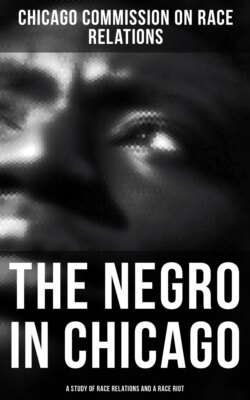Читать книгу The Negro in Chicago - A Study of Race Relations and a Race Riot - Chicago Commission on Race Relations - Страница 40
III. BOMBINGS
ОглавлениеA form of organized resistance to the coming of Negroes into new neighborhoods was the bombings of their homes and the homes of real estate men, white and Negro, who were known or supposed to have sold, leased, or rented local property to them.
From July 1, 1917, to March 1, 1921, the Negro housing problem was marked by fifty-eight bomb explosions. Two persons, both Negroes, were killed, a number of white and colored persons were injured, and the damage to property amounted to more than $100,000. Of these fifty-eight bombs, thirty-two were exploded within the square bounded by Forty-first and Sixtieth streets, Cottage Grove Avenue and State Street. With an average of one race bombing every twenty days for three years and eight months, the police and the state's attorney's office succeeded in apprehending but two persons suspected of participation in these acts of lawlessness. One of these, James Macheval, arrested on the complaint of C. S. Absteson, a janitor, was released on a $500 bond. At the writing of this report, one year after the arrest, there has been no trial. Another man was apprehended, questioned, held under surveillance for two days by the police, and finally released.
News of threatened bombings in many cases was circulated well in advance of the actual occurrence. Negroes were warned of the exact date on which explosions would occur. They asked for police protection, and, in some instances where police were sent beforehand, their homes were bombed, and no arrests were made.
The persons directing these bombings did not limit their intimidations to Negro residents in white neighborhoods; residences of Negroes and white real estate men were bombed because they had sold or rented property in these exclusive areas to Negroes, and Negro bankers' houses were bombed because they made loans on Negro property and supported their mortgages.
These bombings increased rapidly in frequency and damaging effect. The six months' period ended October 1, 1920, witnessed as many bombings as the entire thirty-five months preceding. Prior to 1919 there were twelve bombings. Four of these were directed at properties merely held by Negro real estate men as agents, two of them in Berkeley Avenue just north of Forty-third Street, and near the lake. Five were in the 4500 block on Vincennes Avenue, two at 4200 Wabash Avenue, and one at 4732 Indiana Avenue.
Bombing of real estate men's properties appears to have been part of a general scheme to close the channels through which the invasion proceeded rather than a protest of neighbors. The four explosions in the 4500 block on Vincennes Avenue appear to have been deliberately aimed at the tenants. This block is at the center of the neighborhood most actively opposed to the coming in of Negroes. In January, 1919, a white and a Negro real estate agent were bombed; in March, Jesse Binga's real estate office at 4724 State Street and an apartment at 4041 Calumet Avenue were bombed. In April there were two more bombings, one of a realty office. Following a public meeting on May 5 to arouse white property owners of the Hyde Park district against Negro invasion, there were four bombings. Between January 1, 1920, and March 1, 1920, there were eight bombings in eight weeks. Responsibility for the creation of the sentiment thus expressed was in some instances assumed by organizations. For example the Property Owners' Journal, in its issue for February 1, 1920, said:
Our neighborhood must continue white. This sentiment is the outgrowth of the mass meeting of property owners and residents which was held Monday, January 19. Mr. George J. Williams furnished the climax of the meeting when he informed the audience in terse, pithy language that "Hyde Park enjoys a reputation too splendid as a neighborhood of white culture to allow Negroes to use it as their door mat."
In the issue of December 13, 1919, white and Negro real estate men and owners selling property to Negroes in the district were "branded as unclean outcasts of society to be boycotted and ostracized in every possible manner," and W. B. Austin, white, was accused of violating a gentleman's obligation to his community in selling a home to a Negro. It was asserted falsely that the house which he had sold had been used during the race riots as a "rendezvous for Negroes who fired volleys of revolver shots from doors and windows at white boys in the street who, according to the testimony of neighbors, had not attacked the premises."
On December 26 the home of J. H. Coleman, a white real estate man who had sold a house to a Negro, was bombed. The transaction was not public, and occupancy was not to take place for five months. On December 27 the home of Jesse Binga, a Negro real estate man, was bombed. One week later, on January 6, came the bombing of W. B. Austin, on the North Side.
During 1919 and 1920 committees and delegations of whites and Negroes appealed to the chief of police, the mayor, State's Attorney Hoyne, and the press, but nothing was done. The mayor referred these matters to his chief of police. The police were unable to discover the bombers or anyone directing them. The state's attorney, in response to appeals, emphatically defined his duty as a prosecuting rather than an apprehending agent. All the while, however, the bombings continued steadily; no arrests except the two mentioned were made; and the Negro population grew to trust less and less in the interest of the community and the public agencies of protection.
